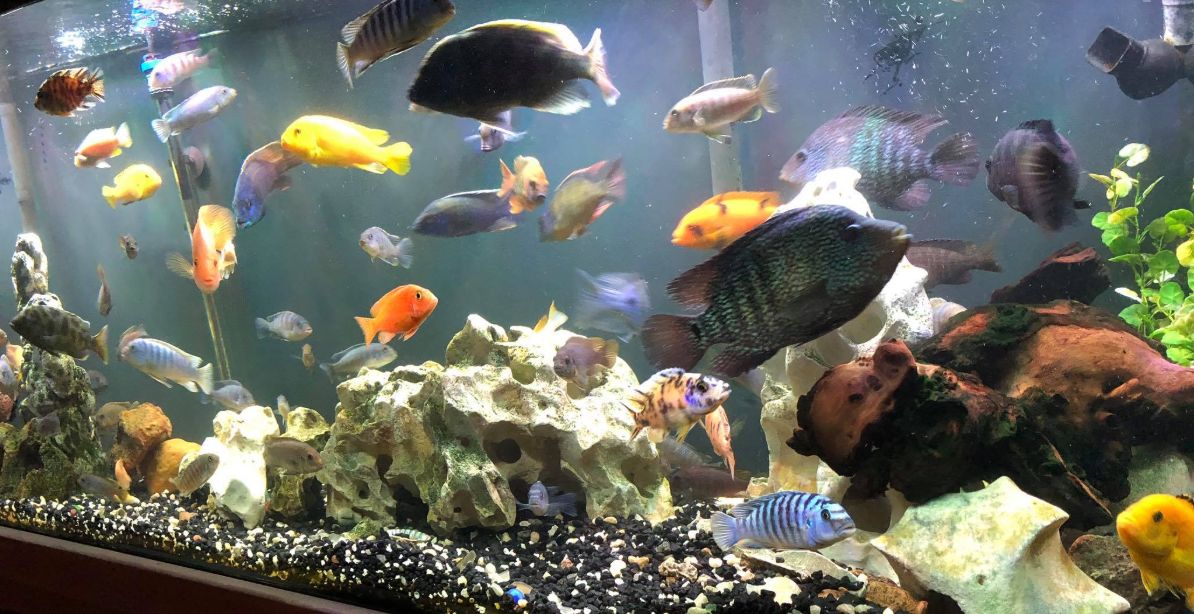
Myths About Selecting Fish for the Aquarium
Selecting fish has become very controversial with the advent of social media and the many people who parrot a myth over and over again. These purveyors of myths about fish selection are known with some disdain as the “fish police”. Some of the myths about fish selection include:
- Tropical fish don’t thrive in water conditions outside their native water conditions.
- Never mix American and African Cichlids as they will have huge aggression issues.
- Mixing fish species from different continents or different biotopes will shorten the life of the fish.
- Carnivores and herbivores require different diets in an aquarium
- Tropical fish thrive in water conditions outside what occurs in their native waters because they have been bred in captivity.
- Neons are an easy fish which are good for a new tank.
- Plecos require wood in their diet.
- Goldfish don’t thrive in warm water aquariums.
- Common, comet, fantail, sarasa and shubunkin goldfish are not fish for beginners.
- Goldfish need at least twenty to thirty to forty to fifty gallons per fish.
.
None of these myths is true
.
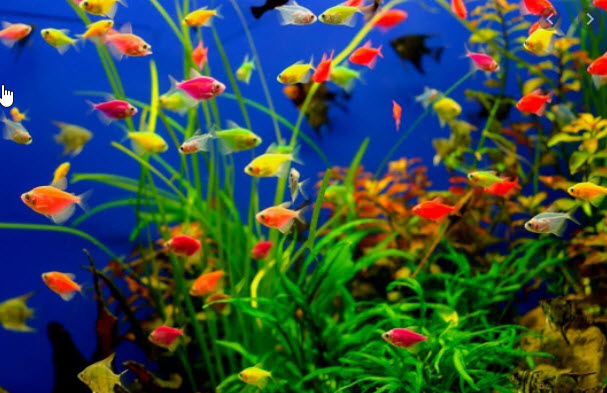
Beginner Fish for Aquariums under Fifteen Gallons
As for the selection of fish for a beginner with a small tank there are some fish which are quite accepting of the mistakes we all make as beginners to the hobby. These fish are:
- All varieties of glofish except the shark*
- Platy
- Endler Livebearer
- Red Eye*, Black Phantom*, Black Neon* and Black Tetras*
- Harlequin Rasbora*
- White Cloud Mountain Minnow
- Betta (alone in the tank)
- Corydoras*
- All types of small barbs*
- Various small Danios*
*schooling fish
All these fish will do well in any water from 6.5 to 8.5 pH and 65 to 85 degrees Fahrenheit (18 to 29 degrees Celsius). They will all co-exist with each other except for the betta. In a small tank bettas sometimes kill all tankmates and sometimes they are peaceful.
Note that schooling fish MUST be in schools of at least six fish. This is NOT OPTIONAL.
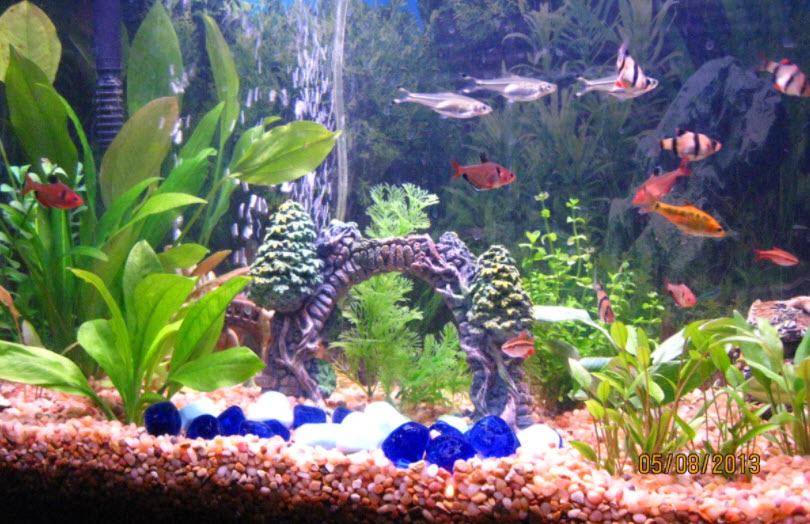
Note I do not put mollies or guppies in the easy beginner fish list. I find guppy and molly strains now a days to be very inbred and weak and I do not keep them anymore. Note that neons, cardinals and rummy noses are NOT easy fish as they come from something called a “black water”. Also note that 75% of the various dwarf gouramis have a virus which kills them at 8 to 12 months of age, so avoid dwarf gouramis.
Note that many put goldfish in very small aquariums and are very successful with them. Common, shubunkin and comet goldfish are very easy fish and do very well in small aquariums. They have been bred for a thousand years in China in small containers and have undergone “inadvertent selective breeding” to become fish that are quite capable of thriving in very small tanks. Just don’t reveal on social media that you are doing that. The PETA folks will jump all over you for “cruelty to animals”.

Beginner Fish Selection for over Fifteen Gallons
As for the selection of fish for a beginner with a tank over 15 gallons there are some fish which are quite accepting of the mistakes we all make as beginners to the hobby. These fish are:
- The List Above
- All varieties of glofish except the shark*
- Platy
- Endler Livebearer
- Red Eye*, Black Phantom*, Black Neon* and Black Tetras*
- Harlequin Rasbora*
- White Cloud Mountain Minnow
- Betta (alone in the tank)
- Corydoras*
- All types of small barbs*
- Various small Danios*
- Shark Glofish
- Larger Barbs*
- Larger Danios*
- Swordtail
- Gouramis (other than the dwarf gouramis)
- Siamese algae eater (not the Chinese algae eater)
- Bristlenose Pleco
- Common and comet goldfish
*Schooling Fish
All these fish will do well in any water from 6.5 to 8.5 pH and 65 to 85 degrees Fahrenheit (18 to 29 degrees Celsius). They will all co-exist with each other save for the fact that goldfish will eat guppies and other small fish. Also the glofish sharks tend to be aggressive and get large.
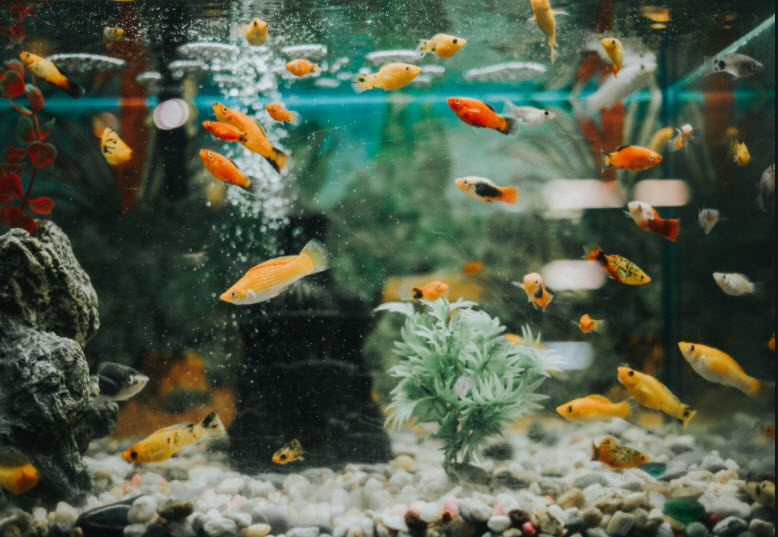
Fish Which aren’t Recommended
And then there are fish decidedly not recommended for beginners. Topping the list:
.
Do not get Neons for a new Aquarium!
.
Neons are a “blackwater” fish which needs very bacteria-free, crystal-clear water that one only gets in a tank over four months old which is over-filtered. Similar blackwater fish not recommended for beginners include:
- Neon Tetras
- Ram Cichlids
- Rummy Nose Tetras
- Hatchetfish
- Clown loaches
- Glass catfish
More about this on this link to blackwater fish:
17.3. Blackwater Fish
Also note that 75% of the various dwarf gouramis have a virus which kills them at 8 to 12 months of age, so avoid dwarf gouramis..

Note the guppy and molly are not on the “beginner” list. The highly inbred fancy guppies are very difficult fish for some. Especially the males seem to be very short lived. But many beginners are successful with them. Different guppy strains are inbred to different degrees and thus the huge variation in viability. Mollies are genetically prone to a disease called the “shimmies” due to inbreeding. More about guppies and mollies in this link:
17.6 Guppies and Other Livebearers
.
Schooling Fish
Schooling fish are very common in the aquarium trade. They tend to be very brightly colored. But they MUST be in schools of at least six in order to insure tranquility in one’s aquarium.
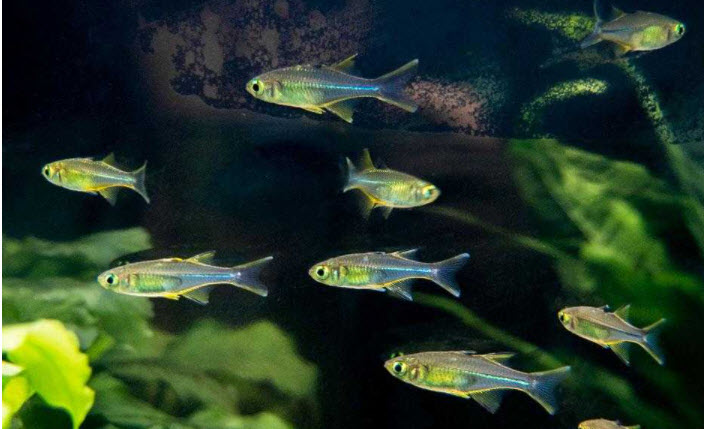
Schooling fish MUST be in schools of at least six and preferably ten fish. This is not to keep them “happy”. This requirement is because, in an aquarium with other fish species, these fish CAN become very aggressive if not in a school. Groups of two or three fish of species like tiger barbs, serpae tetras, black phantom tetras, zebra danios and most glofish (bettas and sharks being the exceptions) have become killers in SOME aquariums. Sometimes these fish have killed much larger fish like angelfish if they are not in a decent sized school. So a school is a requirement.
The reason behind this schooling requirement is that schooling fish become very afraid when they can’t find a school. They become very defensive and lash out at other fish which get too close. So it is not aggression, it is fear which creates the problem.
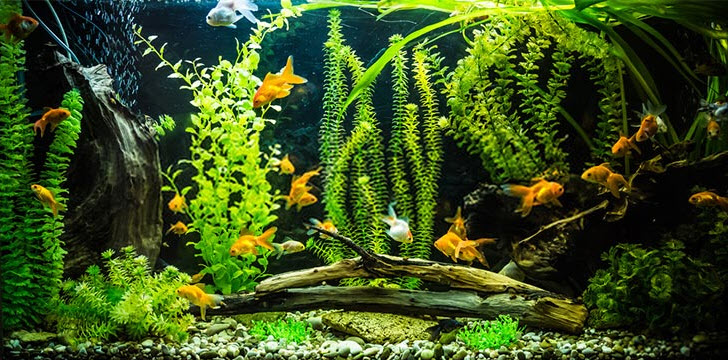
Goldfish
Probably the most common fish that beginners start with is the goldfish. This fish is the target of a concerted PETA (People for the Ethical treatment of Animals) campaign to “humanize” fish keeping in line with their extremist views. Contrary to what all the many folks from PETA say on social media everyday, it is possible to raise a thriving healthy goldfish to a very old age in a small aquarium. If you want the truth about keeping goldfish go to this link:
17.5. Goldfish
.
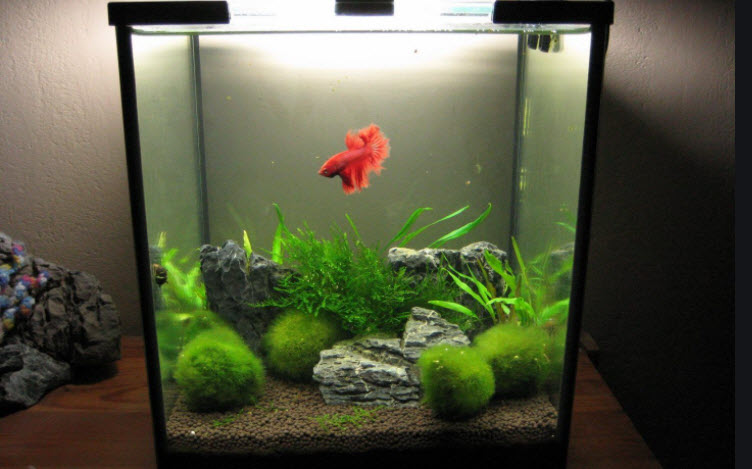
Betta
Another fish which has had a lot of propaganda spewed about the size of its tank is the betta. For information on keeping this somewhat unique fish go to this link:
17.7. Aquarium Bettas
.
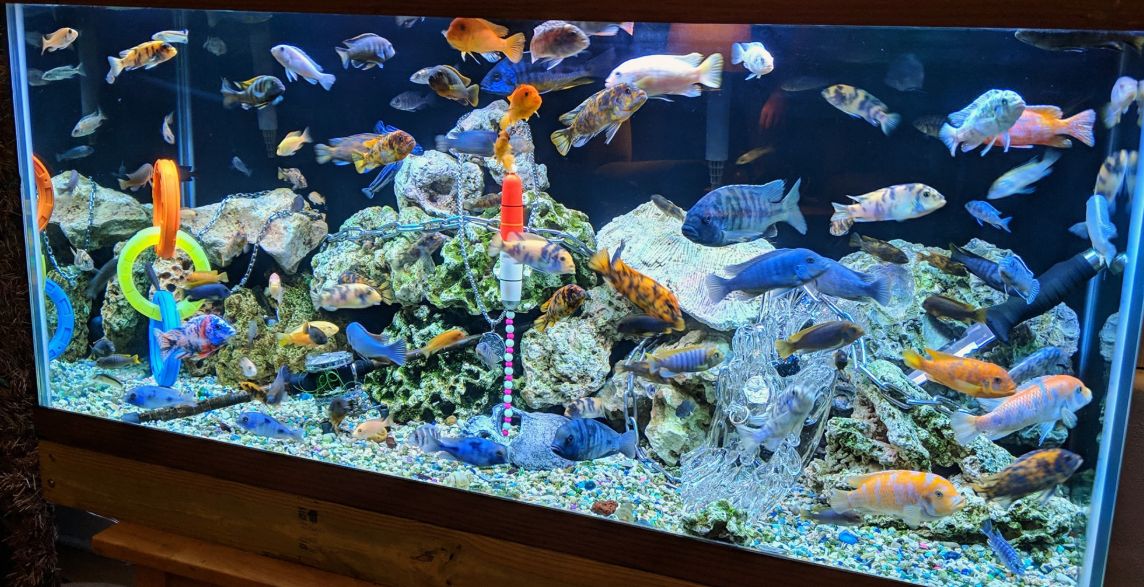
Lake Malawi Cichlids
And a very popular type of tank that many beginners like to do is an African Cichlid aquarium with Lake Malawi Cichlids. This is a link to information on them:
17.4 Lake Malawi Cichlids
Nano Aquariums
Another special situation is the stocking of very small to small tanks. This is called a “nano” aquarium and is covered in this link:
17.9. Nano Aquariums
.
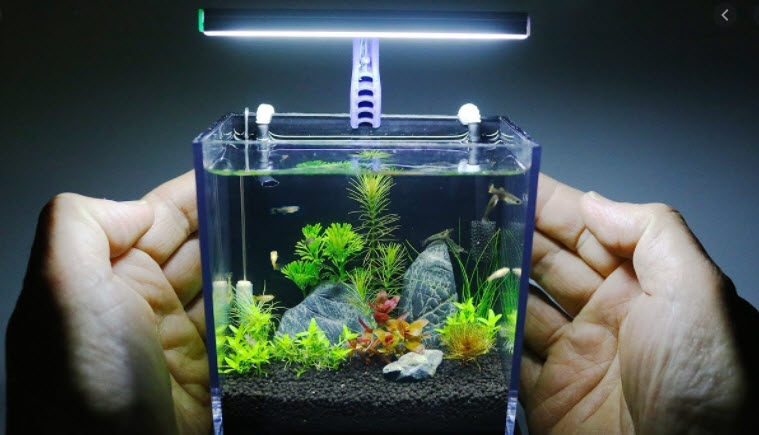
Cold Water Aquarium
Some folks want an aquarium which can go down to 50 to 60 degrees F. In addition to goldfish the following fish do well in colder water: danios, white cloud mountain minnow, Hillstream loaches, weather loaches, Neocaridina shrimp, guppies, platy’s, Buenos Aires tetra, bloodfin tetra, cory’s, plecos and 2 spot, gold, green and rosy barbs.
Breeding Fish
Breeding fish, eggs and fry do “best” with the following:
- Bacteria free, crystal clear, over filtered water
- A food with at least 40% protein and 10% fat in it
- Calcium both in the water as a GH over 4 and in the food as fish meal (includes bones)
- Temperature, pH and TDS (total dissolved solids) in the range of their native waters
- Great aeration with either “choppy waves” at the water surface or a big air pump and air stone.
These are for “optimum” breeding. There are many fish (livebearers, African and Central American cichlids) which breed like rabbits in ANY water and any food. Try giving away juvenile convicts some day.
Add plaster of Paris or Tums (calcium carbonate) to increase GH. Read the label of the food you feed to see the protein and fat levels. And hunt for either “fish meal” or “whole fish” as one or preferably two of the first three ingredients in the food.

Selecting Fish
These are links to three different ways sometimes used to select fish. Some prefer to do their aquariums this way and that is fine. “Different strokes for different folks”:
17.1. Selection via Native Water Chemistry
17.2. Biotopes
17.2.1. Blackwater Biotopes
And these are links to keeping specific fish:
17.3. Blackwater Fish
17.4. Lake Malawi Fish
17.5. Goldfish
17.5.1. Types of Goldfish
17.5.2. Size of Goldfish
17.5.3. Stocking Goldfish
17.5.4. Goldfish Care
17.6. Guppies and Livebearers
17.7. Bettas
17.8. Oscar
17.9. Nano Aquariums
17.10. Aquarium Shrimp
17.11. Discus
17.11.1. Discus Husbandry
17.11.2. Filtration for Discus
17.11.3. Water for Discus
17.11.4. Food for Discus
17.11.5. Discus Pheromones
17.11.6. Breeding Discus
17.11.7. Discus Aquarium Photos
17.12. Axolotl
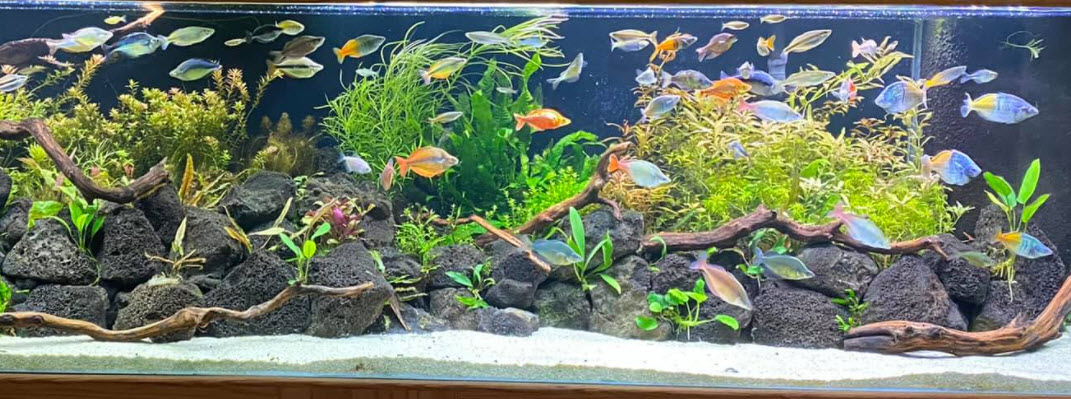
.
Return to Home Page and Main Menu
.
Aquarium Science Website
The chapters shown below or on the right side in maroon lead to close to 400 articles on all aspects of keeping a freshwater aquarium. These articles have NO links to profit making sites and are thus unbiased in their recommendations, unlike all the for-profit sites you will find with Google. Bookmark and browse!
.

Jana says
I have a 75 gallon with two red parrot fish and four angelfish. I need some dither fish to get them swimming around more.
I tried a school of 30 Harlequin rasboras, but it was a disaster. The parrot fish (who previously seemed gentle) harassed them to hiding, even killed some (it may partly be because they weren’t fully grown yet, not sure).
So, I’m thinking I need something larger. I want hardy, schooling or shoaling fish that can act as a dither to get the big fish swimming all around.
I saw some Black Skirt tetras at LFS that look cool, but then heard a YouTuber say they might nip the angels. True?
Others say Congo, Red Eye, Emporer, Buenos Aires, or other mid-size tetra.
What would you suggest?
Dave says
In reply to Patrick …. Use the Walstad method, not the Father Fish method (several readers have killed fish using the Father Fish method). https://aquariumscience.org/index.php/15-8-walstad-aquarium/
And yes, schooling fish require a bit of a commitment.
Patrick says
Hi Dave, I’m new to the hobby and am preparing to set up a 24 gallon tank. My plan is to have a dirt layer capped with play sand to help with plant growth. I have a plakat betta in a 3 gallon currently which I will move into the 24g when it’s ready.
I’m thinking of what tankmates to get for the 24g that the betta will hopefully get along with.
I will probably get some kind of snail as part of a clean-up crew. I’ve been told bristlenose plecos are great scavengers but are prodigious poopers so I am not sure about them. The Corys and Siamese algae eaters seem like good choices.
Swordtails, Endler Livebearers, and platys look very nice.
I think blue dream/velvet shrimp look lovely, but as you say they’re not suitable for brand new tanks or beginners. Plus I’m not sure if my betta will get along with shrimp or try to eat them.
How is it to keep schooling fish? There are some under your beginners list so I imagine those pretty easy. I’m a little worried about schooling fish because I’d need to keep above a certain number of them and replace them if any die, into perpetuity. It seems like a lot of commitment.
I would love your thoughts!
Thanks!
Bhuwan Chander says
Hi Dave,
OK. Any other colorful fish which could compliment my aquarium.
Regards,
Bhuwan
Dave says
In reply to Bhuwan. I don’t know. I’ve never had kissing gouramis.
Bhuwan Chander says
Hi Dave,
I have a 100 gallon tank with an undergravel filter (power head 1000 lph) with 4 inches of gravel. Also I have a 40 gallon sump with 72 big size bright colored pot scrubbies. Current stock of fish is 3 full size tinfoil barbs (Barbonymus altus), 2 mid size parrot cichlids, 2 full size parrot cichlids and 1 full size false Siamese algae eater. I want to add Kissing Gourami fish (pink color) as this will add extra color to my tank. How many can I add? Are these fish aggressive.
Kindly guide me.
Regards,
Bhuwan
Dave says
In reply to Tathagata ….. Just replace the term “discus” with “angelfish” and virtually all the articles on discus can be applied to angelfish. Angelfish are just a lot easier.
Dave says
Asher … I would just let them sort out their aggression issues.
Tathagata says
Hi Dave,
please please add a similar page for Angel fish. Discus get a little too expensive for some and Angels can be equally stunning I guess.
Asher says
I have 8 serpae tetra who all act very aggressive towards each other. A couple of them have some damage to their fins as well. Does the type of serpae tetra matter? The only fish store that’s close to me is PetCo, and they were selling paler serpae tetras without the black bar as well as the classic type that is most commonly known. I have 3 of the pale ones and 5 of the classic. Do I need to make both of these populations 6, or should they be fine? Everything I find online says that they are schooling fish, but they rarely school and seem to find their own area or attack each other. They don’t attack my other fish as you mentioned they would (when kept in smaller groups) in this article.
Dave says
In reply to Tom … There are some small rainbowfish so just let them grow. And, in my opinion, two five inch fish will do just fine in a twenty gallon.
Tom says
I am enjoying my 20 gallon UGF planted tank with about 10 one inch fish. A week after adding some new plants, I found 2 tiny fry. I mistakenly assumed they were from my ember tetras. 6 months later they are about 1.5 inches and appear to be a type of rainbow fish – potentially growing 5 inches long. The 2 of them could be 10 times the “metabolic weight” of the rest of my tank combined! I didn’t intend to have 5 inch fish and don’t know any other fish keepers to offer them to. Dave, do you have any experience dealing with accidental fish?
B z says
I wish you would add articles on so-called monster fish (gars, snakeheads, bichirs…), eels, puffers, and nano fish like pipefish and indostomus. I think the hobby is gravitating towards the “oddball fish” nowadays.
PS. It’s a total myth that some of these fish need live foods. What they actually need is whole meat (live, frozen, fresh… doesn’t really matter). 99 out of 100 just won’t take to dry food, at least not before they starve.